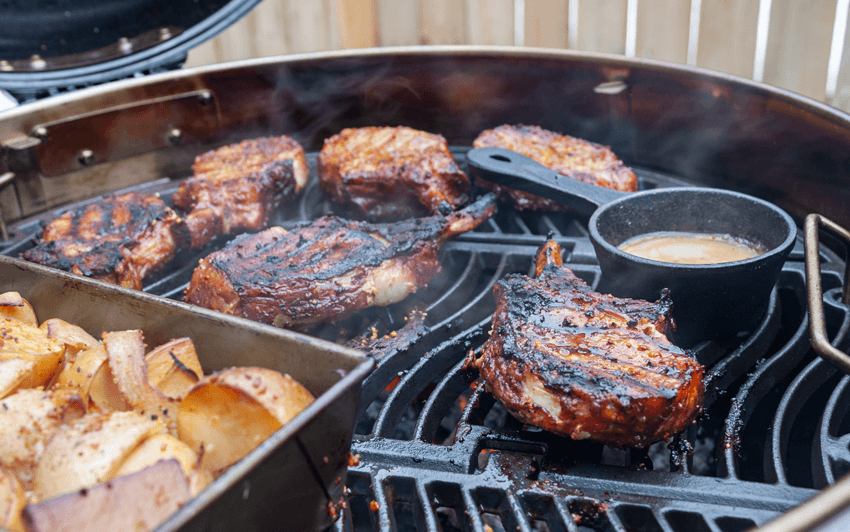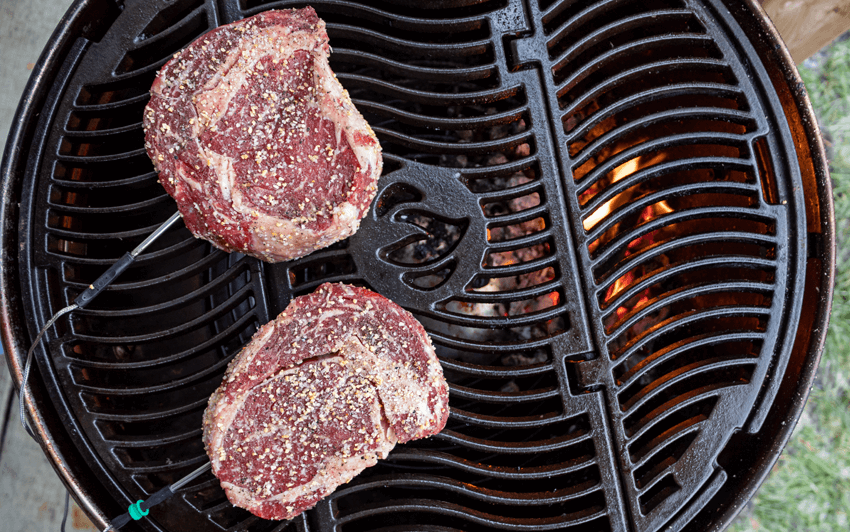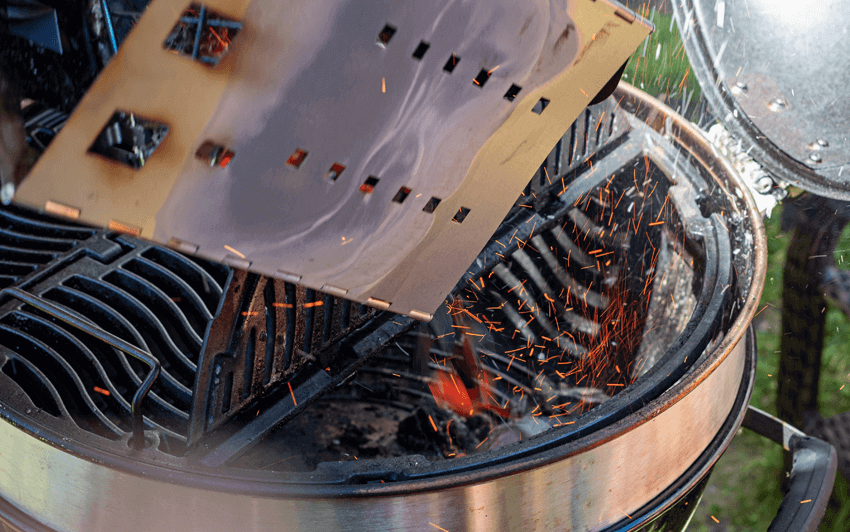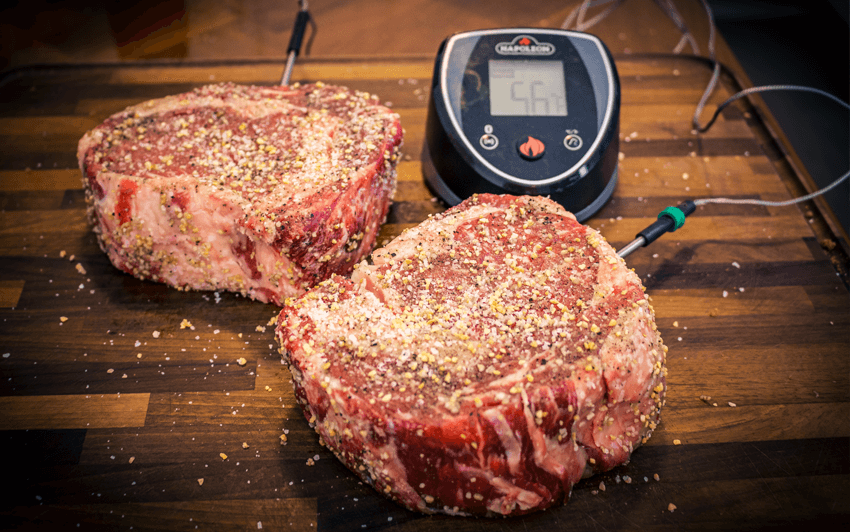
Master Charcoal Grilling with These Charcoal BBQ Tips
Summer is on its way and there is no better time to master charcoal grilling. These Charcoal BBQ tips are sure to get all you fired up. The biggest question is, what will you cook first?
1. Safety First
Naturally we have to discuss safety when it comes to using a Charcoal barbecue. Things like never using your grill indoors or in the garage, leaving a clearance of at least 5-feet (or 1½ meters) to anything combustible like your deck railings, fence, and siding, as well as ensuring that your charcoal is completely out (not on fire anymore) before covering, moving the grill into storage, or a transportation situation like after a tailgate. Most of this stuff is common sense that you probably already know, but just in case. Remember, charcoal is hot and does emit carbon dioxide when burning so space is imperative.
2. Fuel the Fire
The biggest question when starting with charcoal is what fuel to use and how to light it.
Lump Charcoal Vs. Briquettes
Personally, I am a huge supporter of using untreated hardwood lump charcoal to fuel a charcoal grill. A high-quality lump charcoal produces a fantastic flavor and is safe to add to an already lit charcoal grill. Briquettes are made from sawdust, glues, and starter fluids for ease of use and tend to burn hotter. They also should not be added to a charcoal cookout that is underway unless the new load is also lit. That means that if you want to do a long cook, like a brisket or pork shoulder, you have to light more charcoal and wait for it to completely ash over as the charcoal in the grill is consumed.
This is Lit
Lighting charcoal can be challenging, even for veteran barbecuers. A charcoal chimney starter is the fastest and easiest way to light charcoal, whether it is lump or briquettes.
-
Fill the bottom of the starter with newsprint or paper towel
-
Fill the starter with charcoal
-
Carefully light the paper on fire
-
Wait 10 to 15 minutes until the charcoal has ashed over before dumping the lit coals into the grill
Shutting Down and Bonus Fuel
When you are done grilling, close all vents on the top and bottom of the grill and allow it to completely cool. With hardwood lump charcoal, if there is anything left after things have cooled down, you can use it again in the next cook. Just make sure to protect the grill from getting wet inside.
3. General Charcoal Tips
Preheating your Charcoal BBQ is important to successful cooking no matter the fuel or the cooking style you are going to be using. Always preheat your barbecue for at least 10 to 15 minutes after dumping the coals into the ‘cue. This ensures that the ambient temperature inside is good and that the cooking grids are primed for food.
Although you should have done this already – at the end of your last cookout when the food was resting – give your preheated BBQ a quick brush to make sure that there’s no leftover residue from your last meal. A clean grill will help prevent food from sticking.
Bonus Cleaning Tip
If you used the indirect method for grilling on your charcoal barbecue, the cooking grids may be a little tough to clean. Using heat resistant gloves, turn the cooking grids so that the dirty section is over the lit coals. Let it sit for a few minutes and then give the grill a quick scrub. The heat will help burn off the residue from your delicious meal.
4. Direct Grilling
Direct grilling is when you set up the charcoal barbecue to cook food over high heat above the lit coals.
How to Set Up For Direct Grilling With Charcoal
Direct grilling is great for smaller, fast cooking meats and foods that you want a good sear on. Things like steaks, chicken, pork chops, burgers, and sausages can all benefit from the kiss of flame and set up is pretty simple.
-
Open the vents on your charcoal grill ½ to ¾ of the way.
-
Light your charcoal using your favorite method. You will want 1 to 2 loads (chimneys full).
-
Once lit, pour the charcoal into the grill, trying to group all of the charcoal together to create a high heat zone.
When cooking using the direct technique, place the food directly over the lit coals. Ensure that your grill has preheated to a high temperature. If you’re not getting as hot as you wish, make sure the coals are getting enough oxygen by opening the vents further.
For more intense searing, lower the cooking grids closer to the coals. Don’t forget that the cooking grids will need to preheat too. Remember to keep a “cool” zone for food that is nicely seared but maybe not quite done so that it can finish cooking and not burn from the intense heat. This is also a great way to keep food that may not have a mouth to eat it yet, warm.
All Consuming
Fire needs oxygen to feed it. A hotter fire will require more air. That is why vents are opened when using a high-heat technique like Direct grilling. This, however, consumes the charcoal faster. That means, that if you are cooking a lot of food for a crowd you will need to add more charcoal to the fire more frequently. Thankfully Napoleon’s Charcoal Grills have convenient hinged grids that allow you to do this easily.
5. Indirect Grilling
Indirect grilling is when you set up the charcoal barbecue to cook food using a lower temperature for longer times. It’s brilliant for roasting, baking, and smoking. Food is placed above a drip pan away from the lit coals.
How to Set Up
-
Light ½ to 1 full load of charcoal using your preferred method.
-
Because you are using a cooler temperature to cook, set the vents ¾ to ½ way closed.
-
Remove the cooking grids from the grill and place a tray on one side, or down the middle of the BBQ. Fill with a little warm water, broth, wine, beer, juice, etc.
-
If you are doing a long cook – any longer than 40 minutes - add extra unlit charcoal to the side of the drip tray. (On both sides if you put the tray in the middle.)
-
Pour the lit charcoal onto the unlit charcoal. Add extra flavor by including some wood chips or chunks for smoke.
-
Place the cooking grids onto the grill in the highest position.
-
Allow your charcoal barbecue to come up to temperature, adjusting the vents to ensure that the temperature is ideal.
-
Place the food over the drip tray and cook.
If you are cooking anything that would taste even better with a bit of a sear after roasting or slow smoking you can use heat proof gloves to move the cooking grids closer to the lit charcoal. Open the vents to heat the fire further and place the food over direct heat until beautiful grill marks form.
Buring Ring of Fire
When you wish to smoke but don’t want to be adding charcoal all the time use the Chain/Minion/Snake method. Fill your Charcoal BBQ with a ring of unlit charcoal, you can also fill the whole bottom of the grill with a single layer of unlit charcoal. Place chunks or chips of smoking wood throughout these unlit coals. Light a small load in a chimney starter – only about ¼ to ½ way full - and place the lit coals at the beginning of the ring of unlit charcoal or in the middle if you did a single layer. The lit charcoal will slowly light the other charcoal and the wood for a slow and low fire that should last a good long time.
6. Pro Tips
Don’t peak too much. It’s tempting to check and make sure that everything is coming along nicely but lifting the lid will add oxygen which will cause the fire to burn hotter. This can wreak havoc if you are doing some slow roasting or smoking.
Use a barbecue meat thermometer with multiple sensors, like the Napoleon Bluetooth Wireless Digital Thermometer, to monitor both the temperature of the grill next to the meat and the meat itself when smoking or roasting.
Racks, skewers, toppers, and woks work just as well on a charcoal grill as they do on a gas grill, so don’t be afraid to have fun with your favorite grilling accessories.
Now that you have the ammunition to master charcoal grilling, what is the first thing you’re going to cook on your charcoal barbecue? Share your favorite charcoal tips, best charcoal grilling recipe, and your success stories on our social pages like Facebook and Instagram, using the hashtags #NapoleonCharcoalBBQing and #NapoleonGrills.
Happy Grilling!





